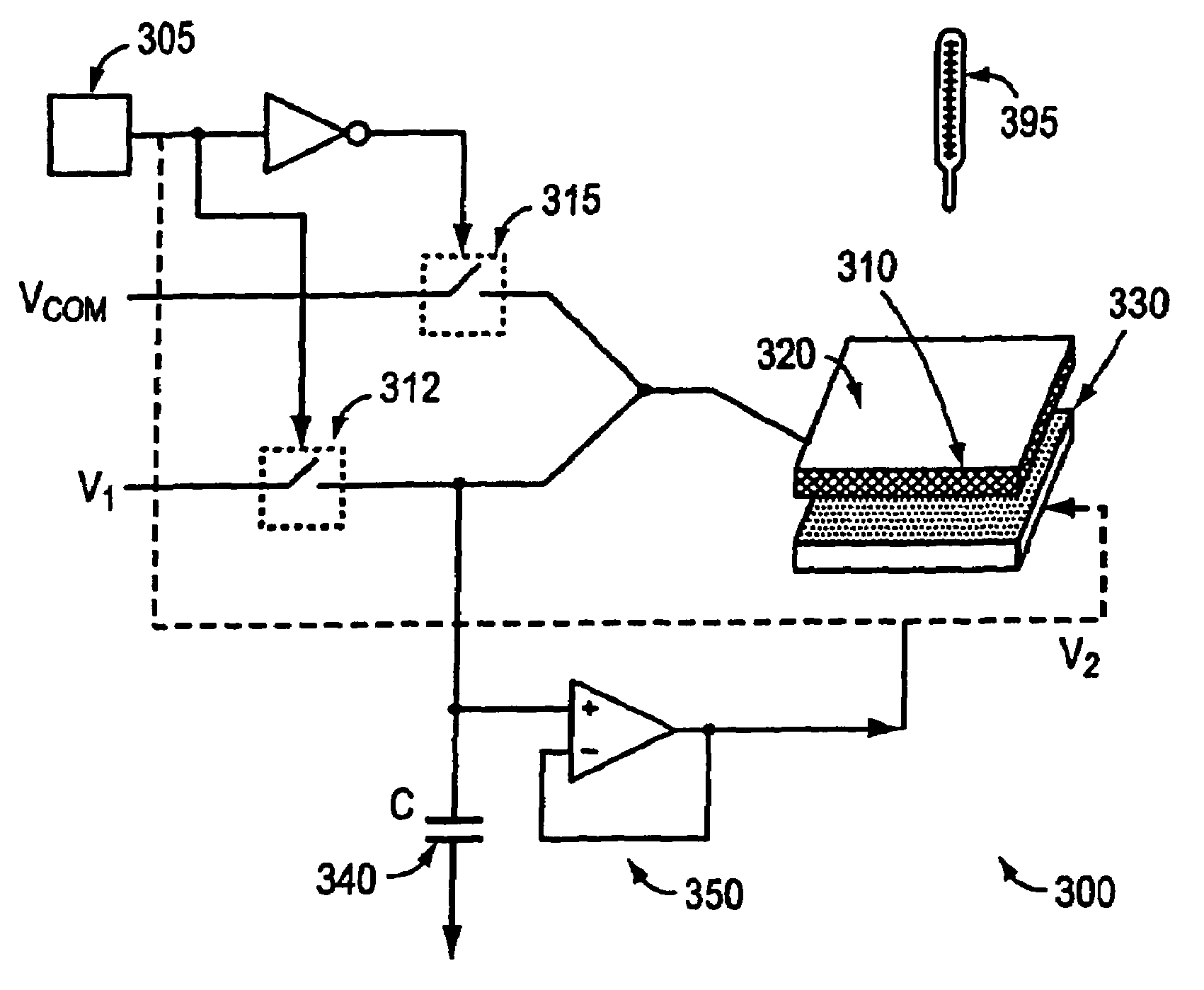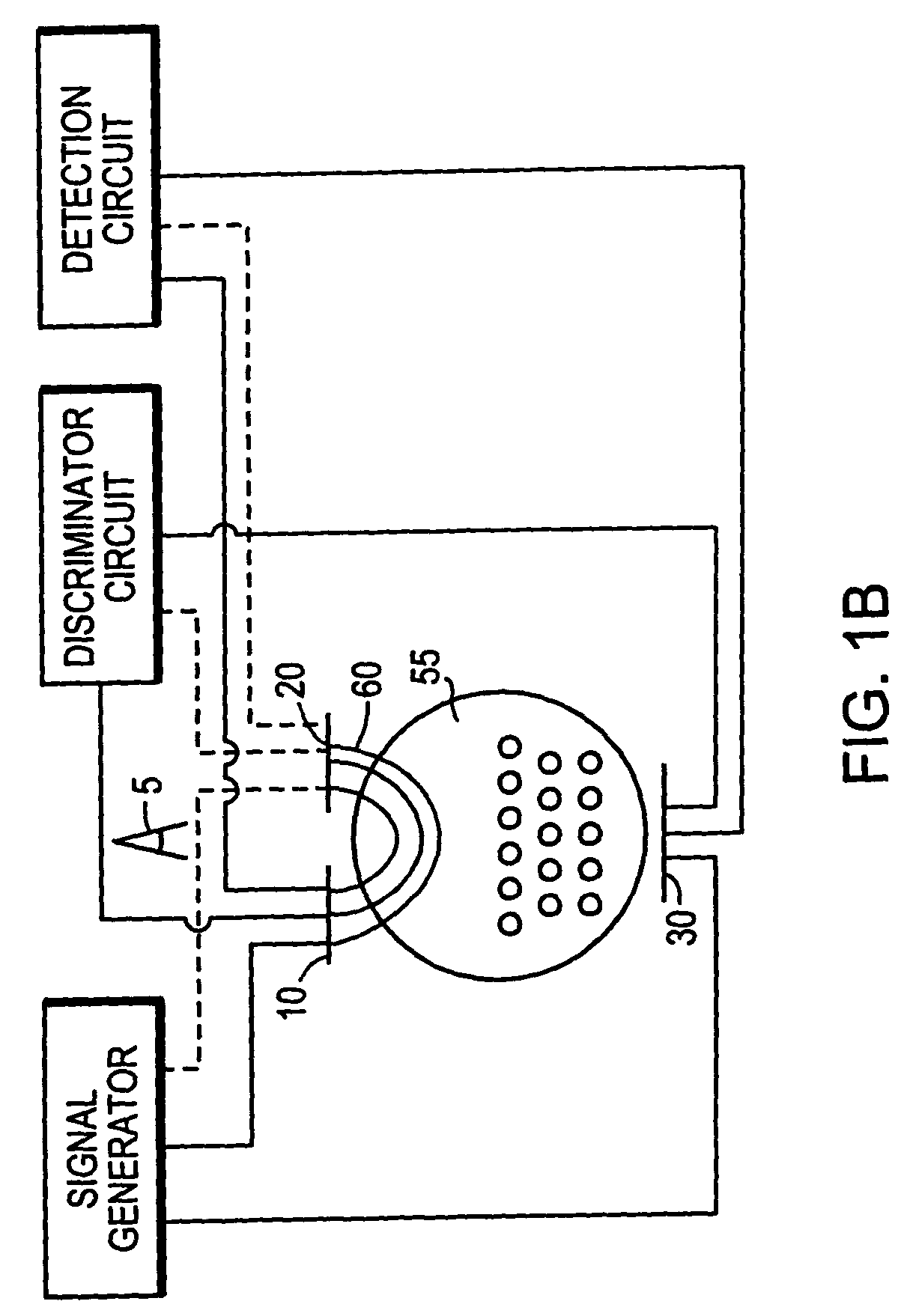Method and apparatus for determining properties of an electrophoretic display
a technology of electrophoretic display and method, applied in the field of electrophoretic display, can solve the problems of increasing display cost, complicating manufacturing process, and external sensors not accurately measuring the parameters inside the display
- Summary
- Abstract
- Description
- Claims
- Application Information
AI Technical Summary
Benefits of technology
Problems solved by technology
Method used
Image
Examples
example 1
[0045]A microencapsulated electrophoretic display comprising rutile titania dispersed in a low dielectric constant hydrocarbon fluid was provided. Two electrodes were positioned adjacent each other on the same substrate, adjacent also to a microcapsule, and on the back side of the display from the viewer. An AC electrical signal was placed across the electrodes, and the current passed between the electrodes measured. The frequency of the AC signal was set so that the capacitive characteristics of the microcapsules were measured. Typically, electrical frequencies in the range of 10 Hz to 10 KHz are useful in this regard. The dielectric constant near the electrodes depended on whether the colloid was on the same side of the microcapsule as the electrodes, or on the opposite sides. It is advantageous to have the spacing of the electrodes small compared to the microcapsule diameter. A high dielectric constant indicated that the colloidal particles were near the electrodes, and the displ...
example 2
[0046]A microencapsulated electrophoretic display was constructed with sensing electrodes on opposing sides of the display. These electrodes could be separate structures, or could be the same electrodes used to address the display. The colloidal dispersion was constructed so that the colloid contains a net negative charge. A negative charge is placed on the front electrode, sufficient to address some or all of the pixel. If the colloid is near the front of the microcapsule, the colloid will be repelled from the front surface and attracted to the back. The movement of the colloid gives a characteristic current signal, which rises, peaks, and then diminishes as the colloid transits the cell. This peak has a characteristic time constant and amplitude, depending on the display characteristics. For example, in a display which requires 90 V to address and a cell gap of 100 microns, the colloid transits in the range of 100 ms to 2 seconds, depending on the formulation.
[0047]Alternatively, ...
example 3
[0050]The case of example 2, except the electrodes were adjacent as single side of the display, and spaced close together relative to the microcapsule size. Application of a voltage in the range of 1 V to 100 V causes some of the colloid to move from one electrode to the other if the colloid is near the surface of microcapsule adjacent the electrodes. If the colloid is on the other side of the microcapsule, no such transit will be seen. The discriminator circuit looks for the presence or absence of a current representing the colloidal particles, and thus determine if the colloid is on the face nearer or further from the electrodes. This method has the advantage of not disturbing the relative position of the colloid in the front or back of the display.
[0051]While the examples described here are listed using encapsulated electrophoretic displays, there are other particle-based display media which should also work as well, including encapsulated suspended particles and rotating ball di...
PUM
| Property | Measurement | Unit |
|---|---|---|
| diameters | aaaaa | aaaaa |
| voltages | aaaaa | aaaaa |
| voltages | aaaaa | aaaaa |
Abstract
Description
Claims
Application Information
 Login to View More
Login to View More - R&D
- Intellectual Property
- Life Sciences
- Materials
- Tech Scout
- Unparalleled Data Quality
- Higher Quality Content
- 60% Fewer Hallucinations
Browse by: Latest US Patents, China's latest patents, Technical Efficacy Thesaurus, Application Domain, Technology Topic, Popular Technical Reports.
© 2025 PatSnap. All rights reserved.Legal|Privacy policy|Modern Slavery Act Transparency Statement|Sitemap|About US| Contact US: help@patsnap.com



